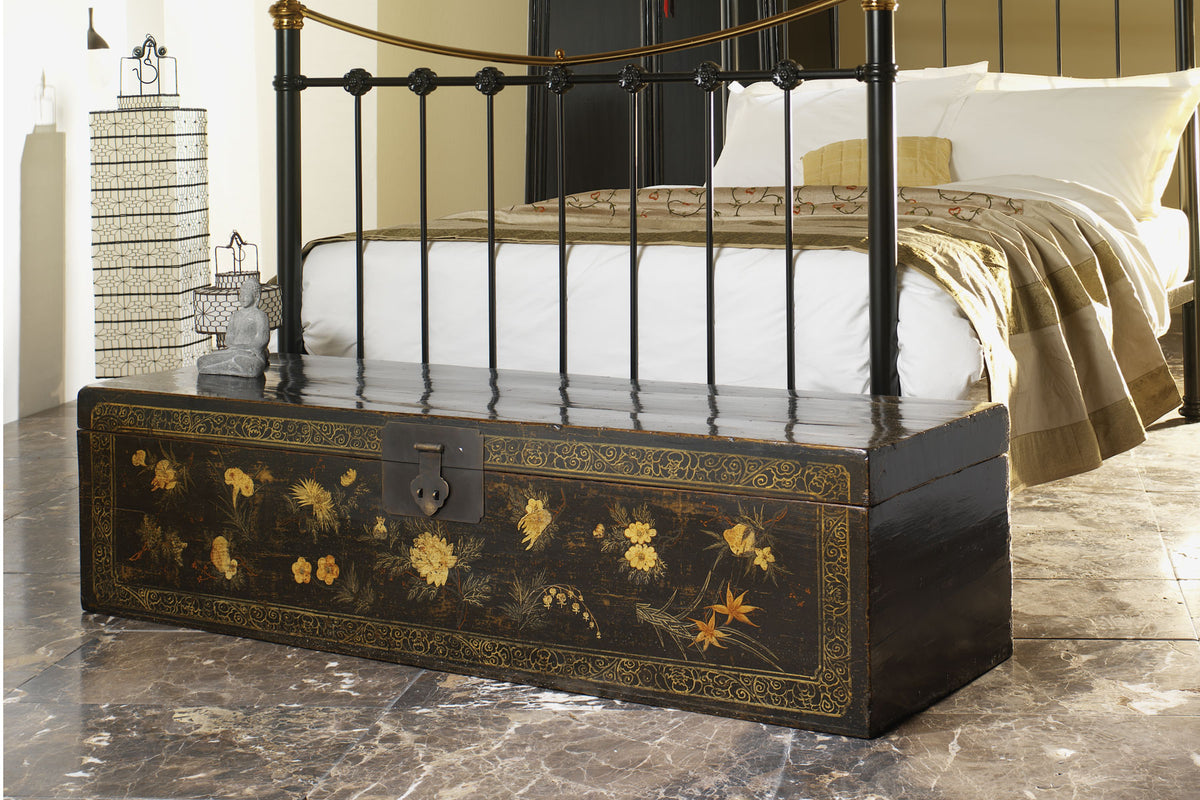
The hidden meanings in Chinese painted designs
There’s often a lot more than meets the eye with Chinese design, which is one of the reasons we at Shimu find it so fascinating. In this post, we'll look at the hidden meanings within the designs on some of our favourite antique furniture, oriental ceramics and wall art.
The three door oriental sideboard below dates from around 1900 and still has its original paintings, in now faded creams, reds and greens. The images show various types of flowers, including peonies. In Chinese design, flowers in particular are often bestowed with a hidden meaning. Peonies are especially popular and are a symbol of high rank and status, indicating wealth and honour. Peonies are also associated with royalty, as they were grown in the Imperial gardens of the Sui and Tang dynasties. The doors of this sideboard also feature butterflies for happiness, and a Chinese peacock to indicate nobility.

This beautiful black antique painted display cabinet below dates from 1880. It is in a style unique to Qinghai province in western China, and is beautifully decorated with paintings of flowers and butterflies, with a carved frame around the shelf space. It is rare now to find cabinets like this is such excellent, and original condition. The paintings of orange chrysanthemums on the doors are still vibrant.
In Chinese design, chrysanthemums are associated with longevity and wealth, because the name sounds similar to the word 久 jiu, meaning ‘long enduring’, and infusions made from their petals are thought to have medicinal properties. This flower also represents autumn and, like the peony, is mentioned in Chinese literature as early as the 9th century BC.


The Lian Wen lamp here, although modern, is decorated in traditional Chinese style, and is one of many oriental-style lamps in the Shimu range. It features traditional oriental floral scrolls, including peony, chrysanthemum and lotus blossoms in cobalt blue. The lotus flower is associated with Buddhism and is a symbol of feminine beauty. Its also represents purity, as it rises cleanly from the earth. In the Chinese language, one of the words for lotus (荷 he) sounds the same as the word for ‘harmony’ (和).
Other lamps in the Shimu collection feature goldfish, (a symbol for wealth), peach blossom (associated with spring and representing longevity in marriage) and cranes.
The crane in particular is an interesting and popular symbol in Chinese ceramic design. Cranes (or herons) have legendary status as prince of all birds, second only to the phoenix. The crane represents longevity and peace, and during Imperial times, crane motifs were used on the robes of civil officials to depict their rank.
As an example, this beautifully embroidered silk piece shows a hand-stitched crane, and is a reproduction of a 2nd rank civil official's badge. Here the crane is denoting that the wearer was highly educated and well read.
Discover more hidden meanings in the oriental and antique pieces found throughout the Shimu website. If you want help deciphering the meaning of any painting or decoration, please get in touch!





Leave a comment